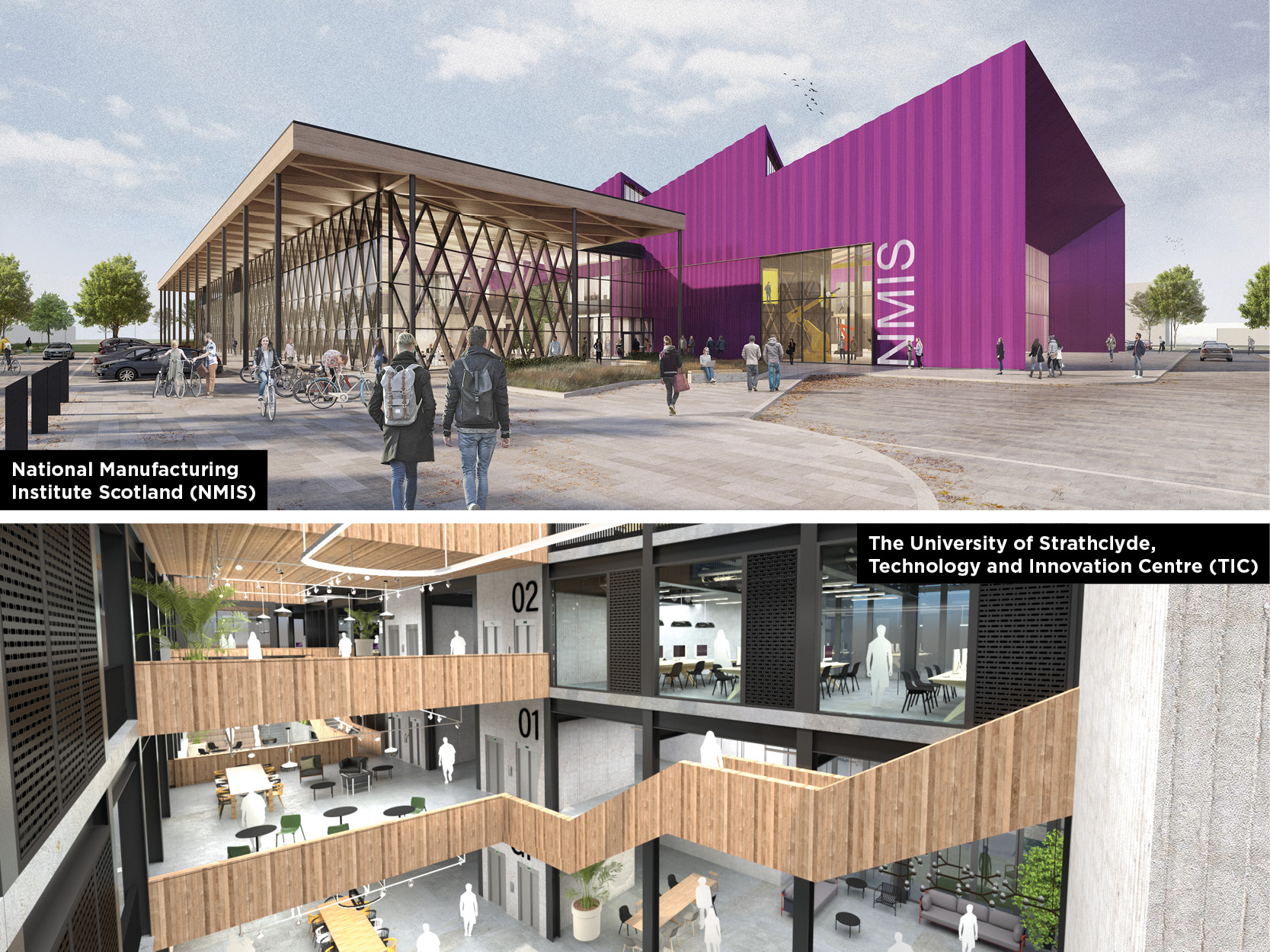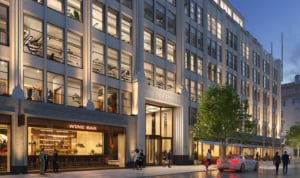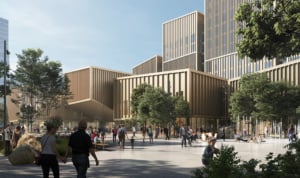Our Scotland Team Discusses Their Most High-Performance Projects

Environmental sustainability and the energy-intensive construction industry don’t often go hand-in-hand. The construction industry is a massive consumer of raw materials and natural resources and contributes to the world’s carbon emissions. It has many conflicting goals and challenges.
Our industry does not have a mass-produced end-product, each building usually is unique. However, the industry is moving in the right direction as sustainable design is becoming more prevalent based on more stringent building regulations, and products are reviewed and selected not only from a cost perspective, but also based on their sustainable and environmental impact. While knowledge, education, and awareness on sustainability are without a doubt on the increase, one of the biggest challenges centres around the commercial viability and availability of materials.
There is no doubt, for now, that sustainable design does impact initial capital costs. Even though capital costs typically account for only 20% of the lifecycle cost of the building, and sustainable design can reduce operational costs in the long-term, there is still the conflict of available funds at the outset of a project against the savings in the future.
To promote best practices around sustainability, it is our job at MGAC | RLF to not only address the functionality of the building, but to help our clients evaluate their projects based on long-term, not just short-term capital costs. We ensure our clients view the life of the building and the environmental impact it will have.
As the 26th United Nations Climate Change Conference (COP26) kicked-off this week, we sat down with our Glasgow colleagues, Dorothy Robertson and Chris McLagan, to discuss two projects they are working on with ambitious sustainability goals.
MGAC | RLF: It’s exciting to have the COP26 conference in your hometown of Glasgow this year. Thanks for taking the time to sit down with us. Can you tell us a little bit about the projects you are working on?
Dorothy Robertson (DR): I’ve been working with The University of Strathclyde on the Technology and Innovation Centre (TIC) Phase 2 project. It’s in the early phases, but once complete will consist of two buildings, TIC East which is 20,000 m2 and TIC West which is 10,000 m2. Located in the heart of the Glasgow City Innovation District, the development will be at the centre of the University’s city centre campus, bringing together academia, business, and industry into the one central collaborative space. This partnership in a unique building will work together to find solutions to challenges that matter in areas of economic and environmental importance, including advanced manufacturing and materials; health and well-being; innovation and entrepreneurship; measurement science; enabling technologies; and ocean, air, and space.
Chris McLagan (CM): Since November 2018, I’ve been working on the National Manufacturing Institute Scotland (NMIS), an unmistakeable building with its distinct heather coloured cladding, and, once complete, will set the standard for the future of manufacturing in Scotland.
The £65M facility is to be an industry-led international centre of manufacturing expertise, led by the Scottish Government in partnership with its enterprise and skills agencies. It will be a national facility for Scotland, where research, industry, and the public sector can work together to transform skills, productivity, and innovation to attract investment and make Scotland a global leader in advanced manufacturing. The new carbon neutral facility, which sits within the Glasgow Airport Investment Area, will include a skills academy, a fully digitalised factory of the future, and a collaboration hub for manufacturers of all sizes and from all sectors.
MGAC | RLF: These sound like exciting projects for the City of Glasgow and Scotland. What is
MGAC | RLF’s role on these projects?
DR: For the TIC project, MGAC | RLF provided strategic cost advice from the initial early feasibility stage through to the current design stage, and we are now providing cost consultancy services with the development currently in RIBA Stage 2. We are also providing procurement advice to the University to achieve cost and value for this unique development.
The project is complex in the number of multi-faceted stakeholders from both academia and industry, so ensuring all requirements are met within a budget can be challenging. However, by fully understanding the brief and the key deliverables of the project, we can manage this. The buildings are being developed to Net-Zero and PassivHaus standards, and we understand will become the biggest non-domestic PassivHaus development in the UK.
CM: For NMIS, MGAC | RLF is providing cost consultancy services which includes life- and whole-cycle costing, providing price information on material and product choice based on whole life use, rather than initial capital outlay.
The project is seeking a BREEAM Outstanding accreditation. In support of this, MGAC | RLF interfaced with the appointed BREEAM Advisor throughout the pre-contract stages of the project. We assisted and provided information relating to the Life-Cycle Assessment (LCA), this being a recent enhancement to the BREEAM accreditation process. A LCA is an assessment used to total up the environmental impact of a product’s supply chain. Product and material choice based on a LCA ensures that the true environmental impact of a material or product is properly considered prior to adoption.
MGAC | RLF: You mentioned Net-Zero, PassivHaus, and BREEAM Outstanding. Can you tell us more about the sustainability aspects of each project?
DR: The TIC project is still in the early stages, but will be designed to PassivHaus Standards, an effective approach for reducing energy demand and CO2 emissions. This together with conscientious choice of products with maximum carbon reduction properties will ensure compliance with the University’s Climate Change and Social Responsibility Policy (2016-2026). This policy has four key aims:
- Tackle climate change and reduce resource use;
- Be socially responsible;
- Collaborate with others to embed sustainability across the institution; and
- Share learning and knowledge to help ensure continuous improvement.
CM: The NMIS building will house a Factory of the Future, which has been designed to be energy carbon neutral in operation. The heat for the building will be sourced from Renfrewshire Council’s ‘ambient heat loop’ system, this producing 90% less carbon emissions than traditional gas boilers. The building will also have EV charging stations available for cars and bikes that are powered by solar energy. To encourage cyclists, paths will be constructed for travel to and around the facility. Landscaping has also been taken into consideration and will be designed to encourage wildlife and biodiversity. As mentioned previously, NMIS is also aspiring for BREEAM Outstanding accreditation, which is the world’s leading sustainability assessment method.
MGAC | RLF: Those are some ambitious sustainability goals that we can’t wait to see through. What do you think these projects mean to the community?
DR: TIC will be located in the heart of Glasgow City Centre, in a regenerated area to be known as Glasgow City Innovation District. The District is home to many innovative companies and organisations who have located here to nurture and accelerate growth, improve productivity, and access world-class research and technology from the University.
Bringing together ambitious, forward-thinking people, the District is tackling societal and global challenges and driving inclusive economic growth. With its world-class skills and talent base, excellent transport links, and reputation as a desirable city to “live, work, and play,” Glasgow is the ideal place to create a thriving community of companies, researchers, and innovation support organisations. These are the key principles of a successful innovation district.
CM: The NMIS project is located in Renfrewshire, which is a region of Scotland that was once synonymous with manufacturing, especially car manufacturing, which ceased trading in the early 1980’s. The construction of a facility of this type, that is designed to make Scotland a global leader in advanced manufacturing, almost forty years later, is poignant and is expected to be welcomed by surrounding communities who still hold a strong connection to Scotland’s manufacturing and industrial heritage.








